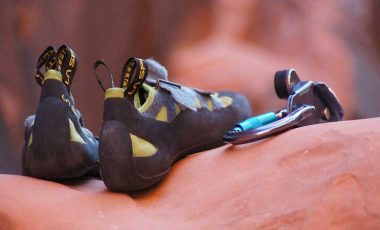Header photo credit: Brian Stone
For many of us, climbing shoe shopping is far from a pleasure. It always seems to leave us with a choice between the lesser of a great many foot-affronting, toe-crushing and soon-to-be-very-smelly evils. The compromises entailed in choosing one shoe over another are often so numerous, in fact, that we feel we cannot win. We choose an aggressive pair of sport shoes that are great for edging and technical climbs and we lose out on smearing and comfort; we choose a more neutral, comfy shoe for trad climbs and find that we lose our mojo on sportier routes or boulder problems. Getting the best climbing shoe for your needs, then, is a truly tricky business. Further trickiness occurs when we add into the equation our level and the type of climbing we do. A short while into our pre-purchase research, it seems like our best bet is to close our eyes and grab the first pair we lay our hands on.
- The best climbing shoes of 2024
- How to choose the best climbing shoes
- What type of climbing do you do?
- Your climbing level and shoe type
- How your shoe should fit
- Types of rubbers
- Types of shoe closures
Summary of the best rock climbing shoes
Disclaimer: We use affiliate links and may receive a small commission on purchases.
| Product | Best for | Shoe type | Closure type | Cost |
|---|---|---|---|---|
| Scarpa Instint VS | Performance sport climbing and bouldering | Aggressive | Velcro | $$$ |
| La Sportiva Genius | All types of climbing | Moderate | Lace-up | $$$$ |
| Five Ten Anasazi Moccasym | Indoor climbing, cracks and smearing | Neutral | Slip-on | $$ |
| Evolv Shaman | Performance | Aggressive | Velcro | $$$ |
| Butora Acro | Wide feet, sport climbing | Aggressive | Velcro | $$$ |
| Tenaya Tarifa | All types of climbing | Moderate | Lace-up | $$$ |
| Evolv Defy | Indoor climbing | Neutral | Velcro | $ |
| La Sportiva TarantuLace | All types of climbing | Moderate | Lace-up | $ |
| Scarpa Vapor V | All types of climbing | Neutral | Velcro | $$$ |
| Five Ten Quantum | Bouldering and smearing | Moderate | Lace-up | $$$$ |
| La Sportiva Skwama | Bouldering | Aggressive | Velcro | $$$ |
The best climbing shoes of 2024
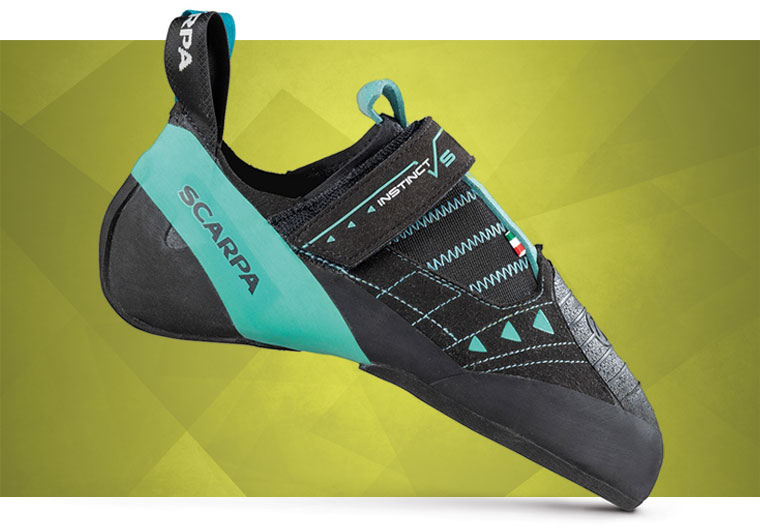
Scarpa Instinct VS
Sport climbers and boulderers looking to up their game on the wall will love the Scarpa Instinct VS. This highly technical and aggressive shoe offers superb precision on thin edges thanks to the Vibram XS Edge sole which combines firmness and mega-grip. With improved confidence, your footwork will go through the roof!
The synthetic uppers feature a rubber section over the toe for extra protection and durability when toe-hooking. And the velcro closure really locks the heel into place nicely. Additionally, the large loops both at the tongue of the shoe and the heel are essential features to help you get these very snug-fitting shoes on and off.
For more information read our full review of the Scarpa Instinct VS climbing shoes.
Pros
- Excellent edging capability
- Very grippy
- Rubber toe patch for toe-hooking
- Highly technical shoe for sport climbers and boulderers
- Maintain shape and fit over time
Cons
- Not the easiest to get on and off
- Fits small — worth trying half a size up
Find the latest price at:
Scarpa | Alpine Trek | Backcountry | REI
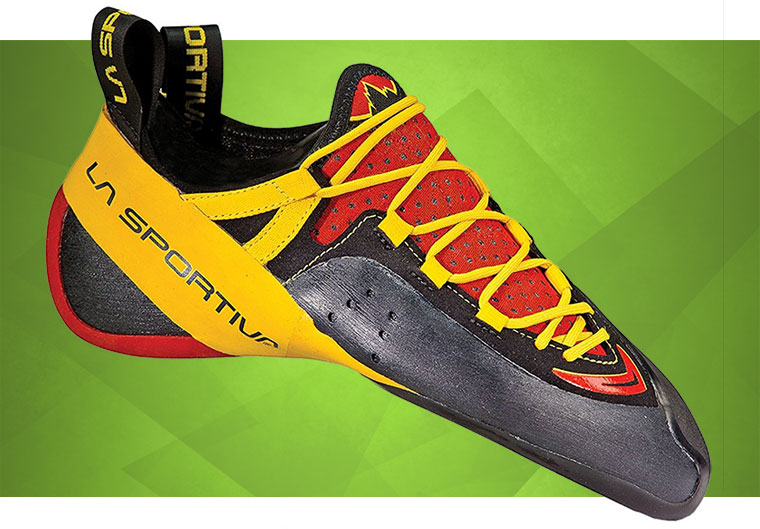
La Sportiva Genius
Genius, by name, genius by nature! They might be mighty pricey, but La Sportiva’s groundbreaking Genius climbing shoes have proved to be a massive hit since they first arrived on the scene a few years ago. Climbers haven’t gotten any richer over the past decade or so, but they’re willing to pay that little bit extra for the overall awesomeness the Genius provide. These shoes feature a moderately aggressive shape but maintain enough flexibility and comfort to be suitable for beginner as well as advanced climbers. They offer superb sensitivity, have a part-leather, part-synthetic upper to combine durability with comfort, and a fantastically grippy, Vibram MS Grip 2 sole. The ‘genius’ part? Unlike 99.9% of climbing shoes, they have no edges and so offer greater sensitivity than all but around 0.01% of their competitors!
Pros
- No-edge technology
- Great sensitivity and precision
- Suitable for beginners and experts alike
- Lace closure
Cons
- Verrrrry expensive!
Find the latest price on:
La Sportiva | REI | Alpine Trek | Backcountry
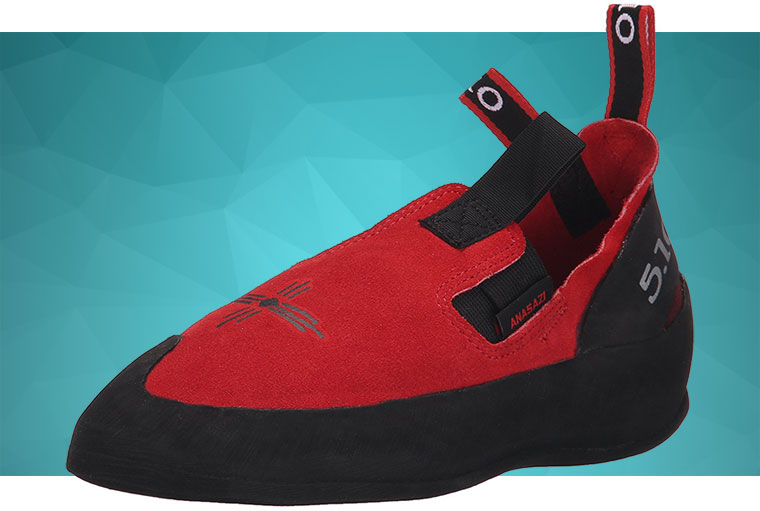
Five Ten Anasazi Moccasym
In terms of comfort and convenience, the slip-on Anasazi Moccasym is a very hard shoe to beat. The Anasazi is a good choice for those who need all-day comfort and/or prefer slipping their shoes off between climbs. They’ll save you time and the (surprisingly deplorable) hassle of redoing laces or velcro straps multiple times in a day. These shoes are solid all-rounders, but are a touch on the soft and stretchy side and as such lack the edging performance of more aggressive and harder soled shoes. Great for smearing and friction climbs.
Pros
- Very comfortable
- Easy to take on and off
- Sole is very sticky
- Soft sole good for crack climbing
- Great for smearing and friction climbs
- One of the best indoor climbing shoes out there
Cons
- Very soft – not great for edging
- Material tends to stretch a lot with time
Find the latest price on:
REI | Alpine Trek | Backcountry
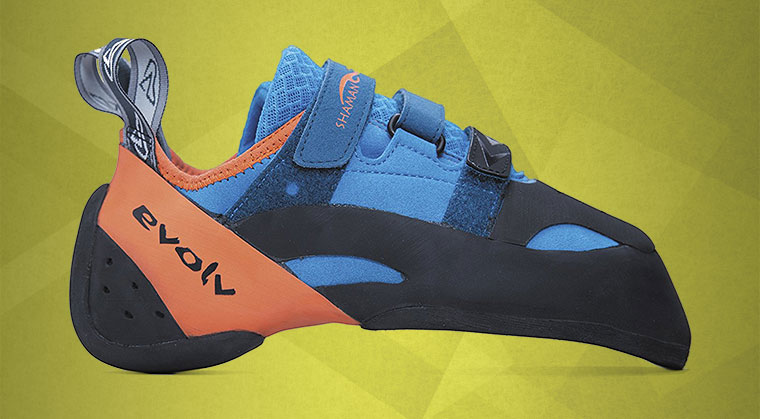
Evolv Shaman
The forecast for buyers of the Evolv Shaman is lots of potential for a happy-ever-after with a very high chance of severe pain in the feet-fingers. Yep, these very high-tech, groundbreakingly styled shoes do their utmost to boost the user’s performance, but those who make a mistake with the sizing will be resorting to their old shoes in a hurry. The Shaman features a cutting-edge “love bump” beneath the toes and an “ergonomic”, slanted toe box, both of which can boost your technical, delicate footwork on the rock. Sadly, if you happen to get the sizing wrong by as much as a quarter size, the only thing you’ll have boosted is Evolv’s turnover and, possibly, the head-count in the local hospital’s Mangled Toes Unit.
Pros
- High-performers on limestone
- Great edging capacity
- Maintain shape and fit over time
- “Love bump” under toe joints supports toes to give you more strength when edging or toeing small pockets
- Knuckle box more closely approximates the contours of your toes to offer better sensitivity
- Reasonably priced compared to other top-end, high-performing models
Cons
- The “love bump” under your toes can be very unloving if you get the sizing even fractionally wrong
- Ditto the love bump for the knuckle box – get the sizing wrong and agony awaits!
Find the latest price on:
REI | Backcountry
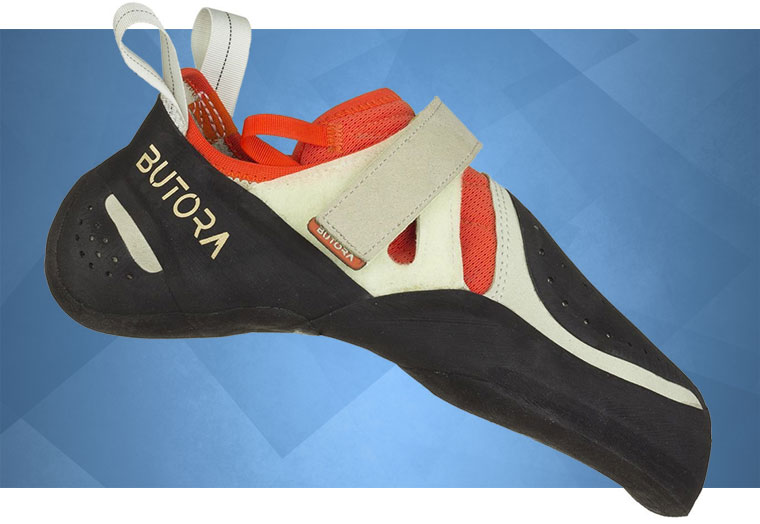
Butora Acro
Butora are relative newcomers to the climbing world, but with the lovely Acro they’ve introduced a very high-performing shoe that rivals the best aggressive sport-climbing models available from more household names. These super stiff and sticky shoes offer great edging ability, surprisingly good comfort and form-defying smearing capabilities. Despite their stiffness, they retain a good degree of sensitivity and Butora’s F5 rubber is right up there with anything by Vibram or Five Ten. We have, however, saved the best for last…all of the above goodness is available in two sizes, standard and wide. Fat-footed folks rejoice!
Pros
- Available in wide and narrow versions
- Decent sensitivity for a stiff shoe
- Stiff sole great for edging
- Possibly the best climbing shoes for wide feet
- Down-camber ideal for bouldering and high-grade sport climbing
- The ‘triple fork’ hook and loop straps on the tongue and heel give you slipper-like convenience
with lace-like precision - Good value for money!
Cons
- The offset heel cup might be a little too roomy for some, leaving hollow space between your feet and the rubber
Find the latest price on:
Alpine Trek | REI | Backcountry
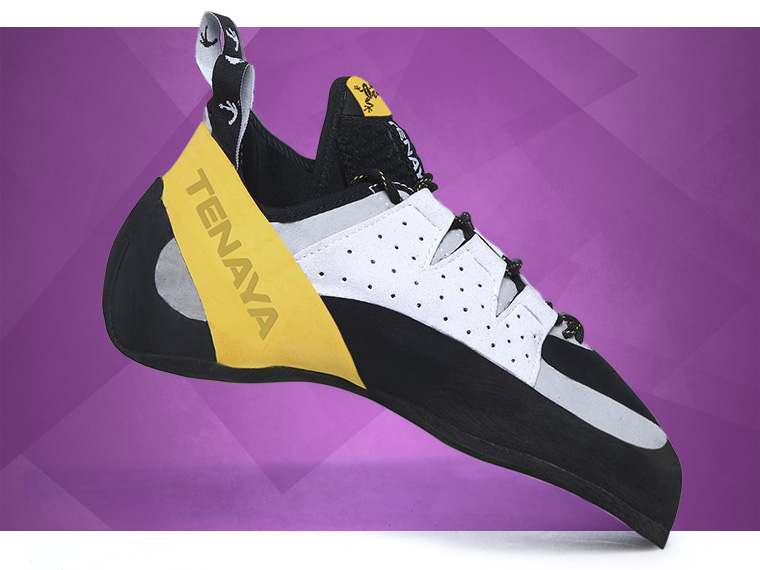
Tenaya Tarifa
The Tarifa are a moderately stiff, moderately aggressive shoe that somehow manages to combine high performance with good comfort levels. It also performs well across the board – edging, smearing, crack-climbing, toe and heel hooking, the Tarifa can do it all! It features a very sticky sole that performs well on all surfaces, lace closure, and an interior sock for added comfort. Winner, right? Well, there are a few downsides. The Tarifa are incredibly narrow, and so not the best choice for for the fatter footed. The toe-box is also very spacious, meaning you have a little bit of wiggle room for the foot-fingers but also that you’ll struggle to squeeze the toe into small pockets.
Pros
- Great for edging
- Very technical (a con for some, maybe…)
- Good sensitivity
- Comfortable for narrow-footed climbers
- Strong (but not excessive) camber
- Pointy toe good for pockets and crack-climbing
Cons
- Very narrow
- Toe box a tad roomy/high
- Crazy sizing – with the Tarifa, you can afford to go down at least one size
Find the latest price on:
Alpine Trek | REI | Backcountry

Evolv Defy
The hugely popular Evolv Defy have won their legions of indoor-wall climbing fans for two reasons – they’re extremely comfortable and they offer great value for money. The 4.2mm Trax rubber on the Defy is super-sticky and great for smearing. The toe is also well enough articulated for the meatier, positive holds relative novices and lower level climbers can expect to find on their routes. If you’re looking to step things up a notch and take on more technical climbs, however, the Defy aren’t going to help you. Their relatively loose fit and soft toe might offer superior comfort to more aggressive models, but will make tougher routes a whole lot tougher than they should be! Ideal for beginners and those who prioritize comfort and cost over performance.
Pros
- Good value for money
- Very comfortable
- Best suited to wall-climbing
- Nice sensitivity
- Possibly the best climbing shoes for beginners out there
Cons
- Not good for edging
- Loose fit
Find the latest price on:
REI | Backcountry
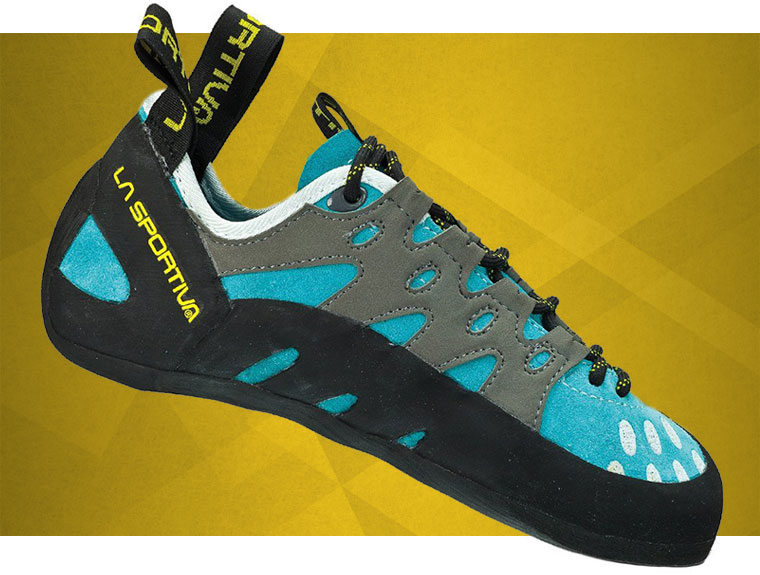
La Sportiva TarantuLace
They might not be the most technical or specialized shoes out there, but the TarantuLace merit their place in any top ten list of climbing shoes for a number of reasons. Firstly, these are superbly comfortable shoes. The slightly cambered sole, leather upper and semi-stiff design all combine to boost the TarantuLace’s all-day wearability while not falling too far behind the toe-crunchers performance-wise. Secondly, these shoes offer great value for money and represent the ideal half-way house between the super-technical, aggressive shoes in our review (like the Evolv Shaman or La Sportiva Genius) and the soft, roomy entry-level models (like the Evolv Defy). Finally, these shoes are wonderfully versatile and are ideal for those looking for one shoe to tackle every type of climb.
Pros
- A great all-rounder – ideal if you want one shoe for every type of climb
- Nice price!
- A great shoe for those making the transition between novice routes and more technical, higher
level climbs - Great value for money
- Comfortable
Cons
- If we’re nit-picking, we’d say this is a jack of all trades and master of none…harsh, but true!
Find the latest price on:
La Sportiva | REI | Alpine Trek | Backcountry
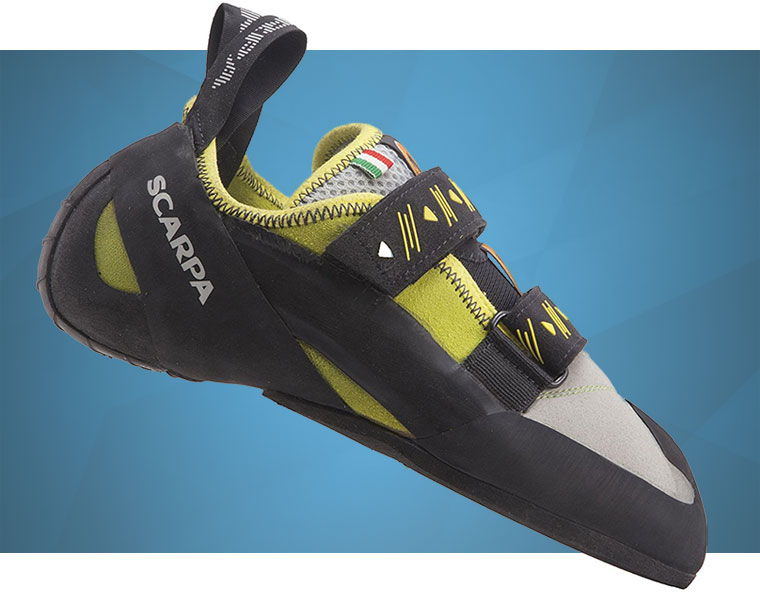
Scarpa Vapor V
They’re comfortable, they perform well in cracks, they smear incredibly well and offer great support when all your weight is on your feet. All told, the Vapor V could well be the ideal shoe for you if you can see past a few small but nevertheless annoying design flaws. The Vapor V feature a Velcro strap closure with one buckle on each side…something that’s not immediately offensive but is likely to become so the first time you wedge one in a wide crack. Also, the feel of these shoes lacks a little bit of sensitivity when compared to other high-performance competitors.
Pros
- Great versatility – good for every type of climb
- Good in thin cracks
- Narrow toe can squeeze in tiny pockets
- Another mid-level, ‘bridge’ shoe between entry-level and high-performance shoes
Cons
- Those buckles…
- Quite expensive
- Quite a narrow fit
Find the latest price on:
Alpine Trek | REI | Backcountry

Five Ten Quantum
For all-day comfort without sacrificing too much in the way of performance, the Quantum might be the shoe for you! This moderately cambered, wide-fitting shoe offers great edging performance thanks to a stiff midsole but also smears very well and is soft enough to deal with more delicate crack climbing. And the downsides? Well, there is only one obviously unlovable thing about the Quantum but it’s a biggie…the price. The Quantum will set you back a small fortune and perhaps offer less performance-wise than other shoes in its price range, such as the Tenaya Tarifa, Evolv Shaman, La Sportiva Genius and Scarpa Vapor V. Whether or not this is the shoe for you will depend on how much you’re willing to pay (and sacrifice) for that extra bit of comfort!
Pros
- Very comfortable
- Smears well
- Stiff midsole aids edging on steeper climbs
- Uses very sticky C4 Stealth rubber
- Great for toe and heel hooking on boulders
Cons
- Very pricey
- Not as high performing as other shoes in its price range
Find the latest price on:
REI | Backcountry
R
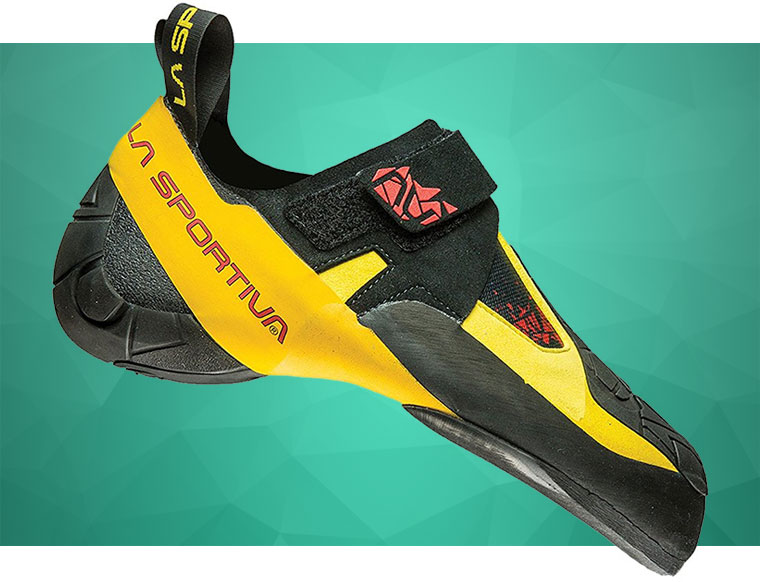
RLa Sportiva Skwama
The RSkwama is a very dynamic, high-performing shoe that comes in at a much friendlier price than many of its top end competitors. It might be a little on the soft side to rival those competitors in edging, but offers greater comfort, very good performance in cracks and a very sticky, Vibram XS Grip2 rubber sole. The Skwama also holds its own in toe and heel-hooking performance owing to the S-heel design (which prevents the heel slipping when hooking) and an articulated rubber patch across the toe, both of which make these amongst the best climbing shoes for bouldering out there. Good value for money and a solid option for those who don’t require a top performer in edging.
Pros
- Very versatile
- Aggressive shape
- Softer construction (both pro and con…see below) adds comfort
- Wide toe box
- Cheaper than many high-performing competitors such as the Genius and Quantum
Cons
- A little on the soft side – not great for edging
Find the latest price on:
La Sportiva | Alpine Trek | REI | Backcountry
How to choose the best climbing shoes
Let’s start with our guide to choosing the best climbing shoes for your climbing level and preferred style of climbing.
Trad, alpine, boulder or crag?
Knowing where you’re most likely to be doing the majority of your climbing will aid the shoe-selection process a great deal. If you anticipate spending a lot of time cragging, on technical boulder problems, on single pitches or wall-climbing, you can afford to opt for something a little more ‘pinchy’ as the chances are you will have plenty of opportunities to slip the shoes off and give your feet a breather between climbs.
On the other hand, if you tend to do a lot of multi-pitch, trad, or alpine routes, you might want to give yourself, and your toes, a little bit of breathing room. For these types of climb, the fit can afford to be a little looser, without quite so aggressive an arch/camber, and should be big enough to accommodate a pair of socks if you plan on doing any chillier alpine routes.
If you happen to be a pretty decent climber, sauntering up routes at 6a/5.10b and above, you may fancy opting for something a bit more aggressive (stiff-soled and banana-shaped) in order to maximize performance and get the most out of your shoe when the routes become a little bit ‘thin’ and lacking in the more substantial footholds of easier climbs. Again, this will depend on how much you want to push the grade and make it to the next level. For lower level climbers or those who anticipate doing a lot of friction climbing, a flatter shoe with softer rubber will serve you much better.
Your climbing level and shoe type
Unfortunately, buying the same shoes as Alex Honnold won’t automatically let us climb like Alex Honnold. Before we get around to putting up all those awesome, free solo first ascents on El Capitan, we mere mortals have to do a little bit of apprentice-work on more lowly routes. This means, in a few words, selecting a shoe that’s appropriate to our level and which does what we need it to do.
Rock climbing shoes types can be broken down into three basic types: neutral, moderate and aggressive. Your level and the type of climbing you do will affect the fit most appropriate to your needs.
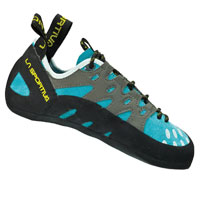
Neutral
These shoes are generally the most comfortable and suitable for beginner climbers. They’re also good for trad or multi-pitch climbers who expect to spend a lot of time on the rock without the opportunity to give their feet a rest by whipping them off. While the flat profile makes these shoes good for slots and cracks, it also means they lack support on steeper climbs and are poor performers on thin edges. The thicker soles on most neutral shoes also detracts from their sensitivity but wears down less quickly.
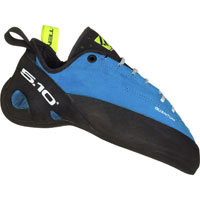
Moderate
These shoes feature a more gently curved camber. In terms of fitting, you can go super-tight for sport climbing, bouldering or wall climbing, or a size up for longer routes. The stiffness of these shoes varies greatly and most models offer a sort of happy medium between super-aggressive, high-performance shoes and neutral, entry-level shoes.
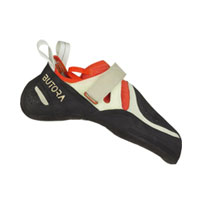
Aggressive
The camber on these shoes is even more banana-shaped than on moderate shoes and, if stiff enough, offers great support on steep and overhanging climbs. Most aggressively cambered shoes have a stiff sole or midsole for improved edging ability and usually a very dynamic, pointed toe for poking in pockets. On the downside, these shoes are not made for comfort and are really not what you want to be wearing on an all-day trad or multi-pitch outing. They also don’t usually smear as well as shoes with a flatter profile.
How your shoe should fit
The ideal fit should be snug. If you go any tighter than snug, the chances are you’ll soon regret it. A lot. Not only will you be causing yourself a lot of unnecessary pain and taking much of the enjoyment out of your climbing, but you run the risk of doing your feet a fair amount of damage. Many elite climbers prefer a super-tight shoe to improve dexterity, grip, feel and to place their toes in a more powerful, crimped position on the rock, but also –poor souls – are no strangers to at least a few of the following: claw or hammer toes, bruised toes, corns, nerve compression, fungal infections, bunions.
Think long and hard, therefore, before heading out to buy that high-performing shoe…your toes will thank you for it!
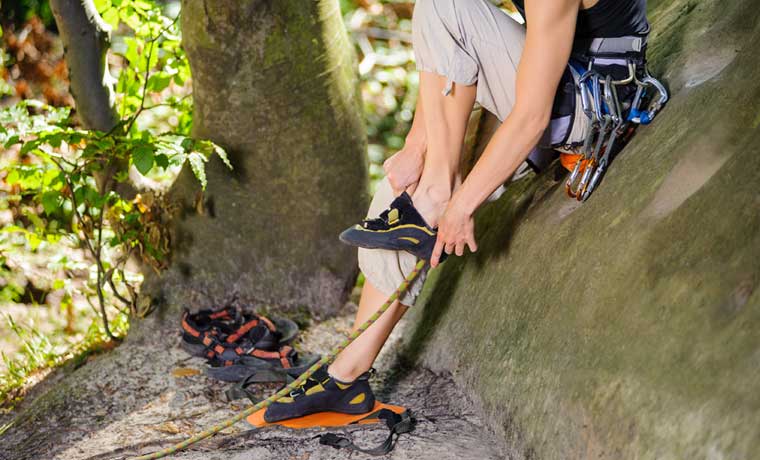
Sizing
Choosing the right size of climbing shoe presents the would-be owner with a potential minefield of variables and sizing differences from brand to brand. Your best bet is to get yourself into a store and try shoes on before buying and bear in mind where and how you anticipate using them. Tightly fitted shoes will serve you well on sport routes, at the wall or bouldering but will become instruments of torture on longer routes.
Be sure to try shoes on in the afternoon, when your feet are more likely to be ever so slightly swollen from walking.
Rubbers
The soles on all climbing shoes are fantastically grippy. There are, however, a few subtle differences between rubber types:
- Harder and thicker (4-5.5mm) soles wear down less quickly and offer better support and edging ability but usually don’t smear or fit in cracks as well as softer shoes.
- Softer and thinner (3-4mm) soles are great for smearing, crack climbing and friction routes but poor on edges and offer far less support on steeper routes.
Closure: laces, slip-on style or Velcro?
To make your decision making even more complex, there’s not just one type of closure to choose from when buying your next pair of climbing shoes. Here are your options:

Lace-up
Laces offer the greatest versatility by allowing you to adjust the shoe’s tightness to the shape of your feet and to suit your climb. On longer routes, you can tie the laces for comfort; on testier climbs, you can tighten things up at the toe to enhance performance and precision.

Velcro strap
Ideal for gym climbing, bouldering and days at the crag when you want to be able to slip your shoes on and off quickly, but not as versatile as laces.
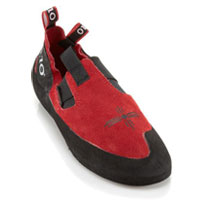
Slip-on
These shoes are usually far softer and offer little in the way of edging capacity but have a number of benefits, too. They go on and off easily, are very comfortable and usually boast superior sensitivity. If you train in slip-ons, moreover, you will be boosting your foot strength by denying your feet the support they’d normally have in stiffer shoes. You’ll notice the difference when you return to the stiffies!
Whether you’re just flapping around at your local indoor wall or putting up first ascents in remote Croatian caves, 2021 has a lot of lovely footwear to do it in. Whichever of the above beauties for bipedals you choose, we hope they’ll help you on your way to ever greater (and more comfortable) climbs in the year ahead!


